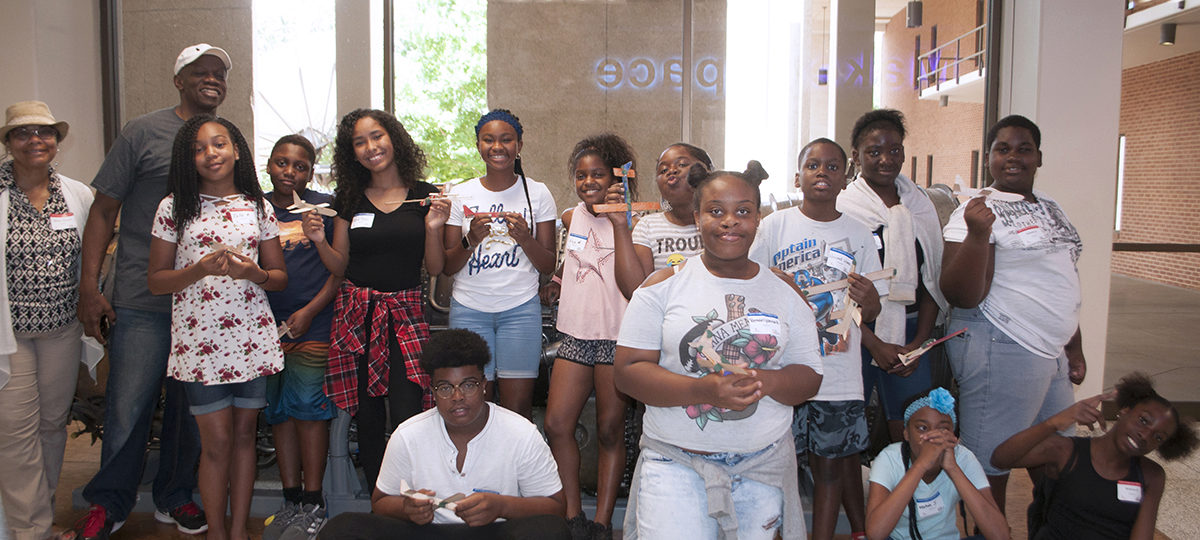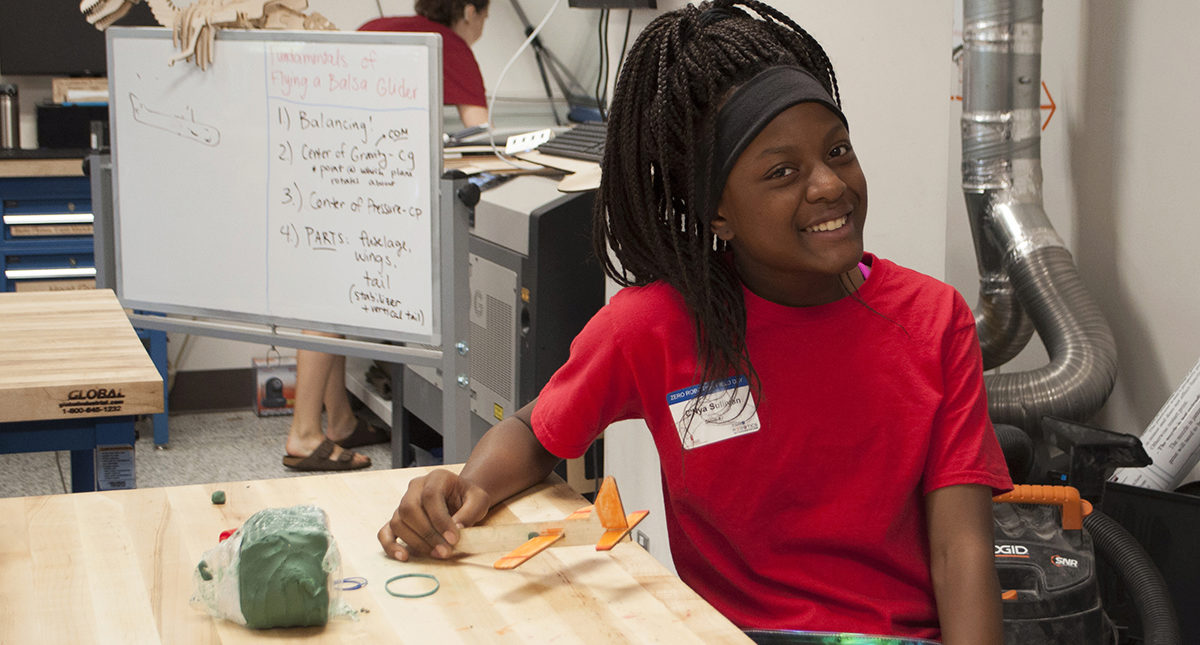
 |
| Testing Their Work. Zero Robotics participants take to the halls of the Weber Building to test out their gliders |
More than 50 Georgia middle-school students from MIT's Zero Robotics program flooded the Georgia Tech campus June 18 to get their first taste of engineering.
Supported by the Georgia Space Grant Consortium and the Georgia Statewide After School Network (GSAN), the day-long engineering tour included a stop at the Aero Maker Space, where they fashioned laser-cut balsa wood components into launchable gliders.
“One of our main goals with Zero Robotics is to get youth excited about learning and thinking about pursuing a career in STEM. Field day is a big part of this and is made possible through our partnerships with Georgia Tech and the Georgia Space Grant Consortium,” said Katie Landes, director of the GSAN.
The Zero Robotics Program is an international robotics competition that teaches middle-school students to program through a graphical interface. The June 18 Field Day event brought together the 6 teams that will represent Georgia at the end of the five-week summer program when the competition will offer the ultimate prize: a chance for the students to have their best coding efforts judged by an actual astronaut aboard the International Space Station.
For now, however, it was all about getting comfortable with the environment where engineers do their work. In addition to working in the Aero Maker Space, AE undergrads Jerome Gilleron and Julia Filloon gave their young visitors a tour of some great Georgia Tech sights: the Bobby Dodd stadium, and the rooftop garden on the Clough Building, and the Student Center.
“The students really enjoyed walking around campus and seeing what Georgia Tech has to offer.Their favorite stop was the Aero Maker Space of course,” Gilleron said.
 |
| Julia Filloon shows NextGen engineers how to construct a working flyer |
Filloon taught the students about the fundamentals of flying and how to use the laser-cut pieces to make a working balsa glider.
“They learned how balance, center of pressure, and center of gravity play a large role when designing and building balsa wood gliders,” Fillon said. "This is what we learn in our intro AE classes."
After assembling the two pieces of balsa wood with putty, the pint-sized aircraft architects added some designs to their gliders and took to the halls of the Weber Building for some test launches.
There were more than a few air disasters, all of which prompted the students to make adjustments to their gliders. Before they left, they'd learned something that every successful aerospace engineer commits to memory: keep trying and keep asking questions.
The Zero Robotics participants spent most of their day on “Act Out,” an interactive game they will learn to code in the next couple of weeks. From the sounds of it, they were also learning a thing or two about their own abilities.
"Doing Zero Robotics lets me know that I'm smart enough to be whatever I want to be," said one student.
That sentiment tells GSGC program manager Lori Skillings that the collaboration is on track.
"We know it will take awhile for students to see their full potential," she said. "But it's great to see how quickly they absorb the passion for science and engineering. We can't wait to see them at our doors in a few years."
. 